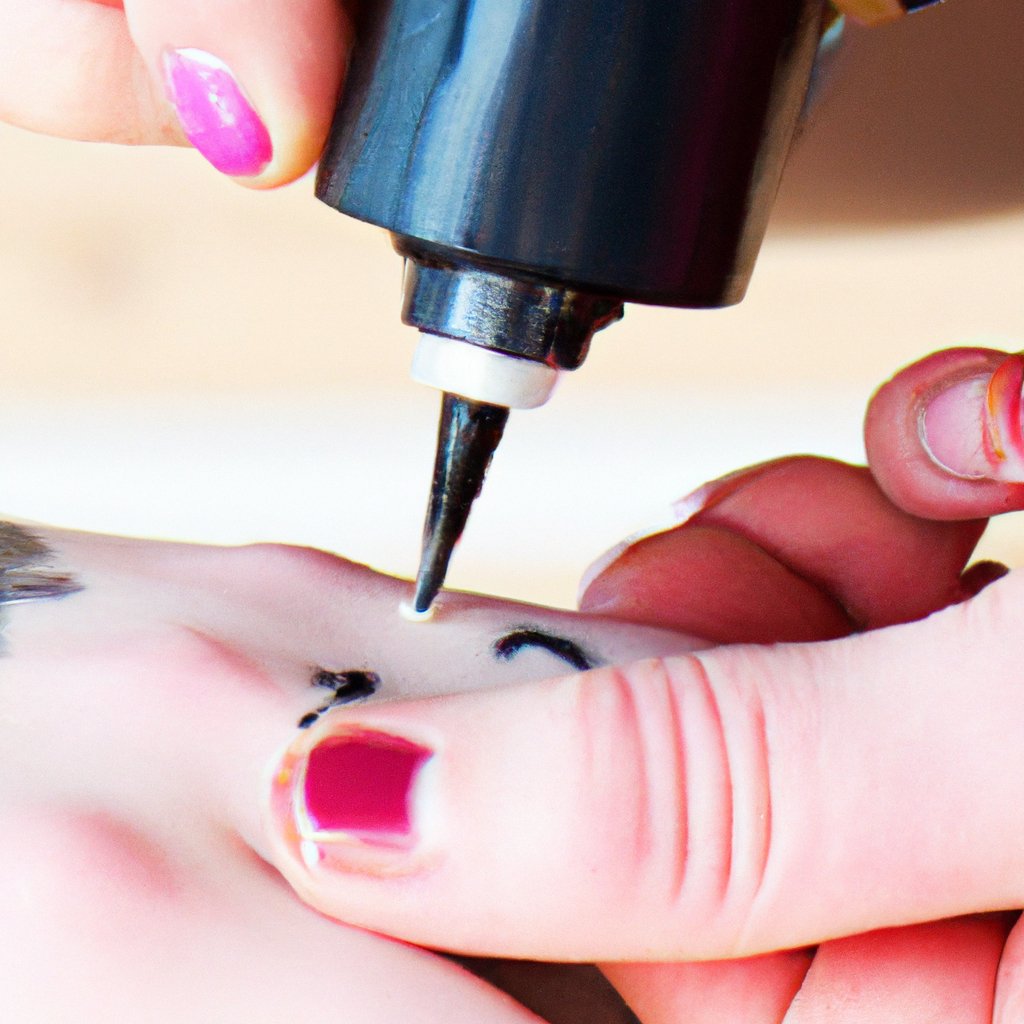Does Numbing Cream Really Work for Tattoos?
Have you ever wondered if numbing cream is effective for numbing the pain during tattoo sessions? If so, you're not alone. Many people considering getting inked have wondered about the efficacy of numbing cream. In this article, we will explore the question: does numbing cream really work for tattoos? We will take a closer look at the benefits, limitations, and potential side effects of using numbing cream and provide you with all the information you need to make an informed decision before your next tattoo session.

Overview of Numbing Creams
Numbing creams are topical anesthetics that are commonly used in various medical procedures, including tattoos. These creams work by numbing the skin, providing temporary relief from pain and discomfort. They are applied directly to the skin before the tattooing process begins and can help minimize the pain associated with getting a tattoo. Numbing creams are available in different forms and strengths, each with its own set of advantages and disadvantages. It is important to understand the ingredients, application techniques, and safety considerations associated with using numbing creams for tattoos.
Ingredients of Numbing Creams
Numbing creams typically contain one or more active ingredients that help numb the skin and provide pain relief. The most common active ingredients found in numbing creams include lidocaine, prilocaine, and benzocaine. These ingredients work by blocking the nerve signals in the skin, preventing them from reaching the brain and creating a pain sensation. In addition to the active ingredients, numbing creams may also contain other ingredients such as moisturizers, preservatives, and emollients to enhance their effectiveness and provide a smooth application.
How Numbing Creams Work
When applied to the skin, numbing creams penetrate the outer layers and begin to numb the nerve endings in the area. This numbing effect is achieved by blocking the transmission of pain signals from the nerve endings to the brain. The active ingredients in the cream work by inhibiting the function of sodium channels, which are responsible for the electrical transmission of pain signals. By blocking these channels, the numbing cream prevents the nerves from sending pain signals, resulting in temporary pain relief for the tattooing process.
Numbing Cream Really Work for Tattoos? in detail." title="See the Does Numbing Cream Really Work for Tattoos? in detail." src="https://aiwisemind.nyc3.digitaloceanspaces.com/aiwm-buttons/shop-now/shop-now-deep-orange-6.png">
Safety and Side Effects of Numbing Creams
While numbing creams are generally considered safe when used properly, it is important to be aware of potential side effects and safety considerations. Some individuals may experience mild skin irritation, redness, or itching after applying the cream. In rare cases, allergic reactions to the ingredients in numbing creams may occur, so it is advisable to perform a patch test before using the cream. Additionally, numbing creams should never be applied to broken or irritated skin, as this may lead to further complications. It is always recommended to consult with a healthcare professional or tattoo artist before using numbing creams to ensure your safety and to address any concerns you may have.
Numbing Cream Application
Proper application of numbing cream is crucial to ensure its effectiveness and to minimize any potential risks. Before applying the cream, it is important to thoroughly clean and dry the area where the tattoo will be placed. This helps to remove any dirt or oils from the skin, allowing the cream to be absorbed more effectively. Once the skin is clean, apply a generous amount of numbing cream to the area and gently rub it in using circular motions. Be sure to cover the entire area where the tattoo will be placed. After applying the cream, cover the area with a plastic wrap or bandage to enhance the absorption and keep the cream in place. The recommended timeframe for application may vary depending on the specific instructions provided with the numbing cream, so it is important to carefully follow the manufacturer's recommendations.
Effectiveness of Numbing Creams for Tattoos
Numbing creams have been widely used in the tattoo industry to help alleviate the pain associated with getting a tattoo. The level of pain relief provided by numbing creams can vary depending on various factors. The strength and ingredients of the cream, the individual's pain tolerance, and the location and size of the tattoo can all influence the effectiveness of the numbing cream. While numbing creams can significantly reduce the pain experienced during tattooing, it is important to note that they may not completely eliminate all sensations. Each person's pain tolerance is unique, and some individuals may still feel some level of discomfort, albeit at a reduced intensity.

Factors Affecting the Effectiveness of Numbing Creams
Several factors can affect the effectiveness of numbing creams for tattoos. The first factor to consider is the strength and concentration of the active ingredients in the cream. Different creams may contain varying amounts of lidocaine or other numbing agents, and creams with higher concentrations are generally more effective in numbing the skin. Additionally, the thickness of the skin in the area where the tattoo will be placed can impact the effectiveness of the cream. Thicker skin may require a longer application time or a higher concentration of numbing cream to achieve the desired pain relief. It is important to consult with a healthcare professional or trusted tattoo artist for guidance on the most suitable numbing cream based on your unique circumstances.
Individual Variations in Pain Tolerance
Pain tolerance varies from person to person, and what may be tolerable for one individual could be highly uncomfortable for another. While numbing creams can provide significant pain relief for most people, it is important to acknowledge that they may not work as effectively for those with a naturally high pain threshold. People with a low pain tolerance may find that numbing creams provide adequate relief, while those with a higher tolerance may still experience some level of discomfort, even with the use of a numbing cream. It is essential to communicate your pain tolerance and expectations with your tattoo artist to ensure a positive tattooing experience.
Different Types of Numbing Creams
Numbing creams are available in various types, each with its own set of properties and advantages. Understanding the differences between these types can help you make an informed decision when choosing a numbing cream for your tattoo.
Traditional Numbing Creams
Traditional numbing creams typically contain lidocaine or a combination of lidocaine and other topical anesthetics. These creams are widely used and have proven to be effective in providing pain relief during tattooing. Traditional numbing creams are available in different strengths, allowing for customization based on the individual's pain tolerance and the size of the tattoo.
Water-Based Numbing Creams
Water-based numbing creams are a popular choice for individuals with sensitive skin or those who prefer a lighter consistency. These creams are formulated with water as the base, making them easier to spread and absorb into the skin. Water-based numbing creams are generally well-tolerated and can provide effective pain relief for tattoos.
Premium Numbing Creams
Premium numbing creams often contain a combination of active ingredients that work synergistically to provide enhanced pain relief. These creams may include additional ingredients such as vitamins, antioxidants, or natural plant extracts that help soothe the skin and enhance the overall tattooing experience. Premium numbing creams are often priced higher than traditional or water-based options, but they can offer added benefits for those seeking a more luxurious and comfortable tattooing process.
Pros and Cons of Using Numbing Creams
Using numbing creams for tattoos comes with its own set of advantages and disadvantages. It is important to weigh these pros and cons to determine if numbing creams are the right choice for you.
Advantages of Numbing Creams for Tattoos
One of the main advantages of using numbing creams for tattoos is the significant reduction in pain and discomfort during the tattooing process. Numbing creams can help alleviate anxiety and make the overall experience more tolerable, especially for individuals with a low pain threshold or those getting tattoos in sensitive areas. Additionally, numbing creams can also help tattoo artists work more efficiently, as the client's comfort is improved, allowing for longer tattoo sessions without breaks.
Disadvantages of Numbing Creams for Tattoos
While numbing creams can provide effective pain relief, there are some potential drawbacks to consider. Some individuals may experience skin irritation or allergic reactions to the ingredients in the numbing cream. There is also a risk of improper application, which can lead to ineffective numbing or even adverse effects. Additionally, numbing creams may interfere with the tattooing process as they can make the skin slippery, potentially impacting the artist's ability to create precise lines and shading. It is important to discuss these potential disadvantages with your tattoo artist and carefully follow the instructions provided to minimize any risks.
Alternative Methods for Managing Tattoo Pain
Aside from numbing creams, there are several alternative methods that can help manage tattoo pain. These methods can be used alone or in conjunction with numbing creams to provide additional pain relief and improve the overall tattooing experience.
Topical Anesthetics
Topical anesthetics, similar to numbing creams, work by numbing the skin surface and reducing pain sensation. These anesthetics often contain lidocaine or other numbing agents and can be applied directly to the skin before tattooing. They come in different forms such as sprays, gels, or creams and can provide temporary relief from pain.
Cold Compresses
Using cold compresses before and during the tattooing process can help numb the skin and reduce pain. Applying an ice pack or a cold towel to the area can help constrict blood vessels, temporarily numbing the skin and reducing inflammation. Cold compresses can be particularly effective for smaller tattoos or for managing localized pain in specific areas.
Distraction Techniques
Distraction techniques can be a valuable tool for managing tattoo pain, especially for individuals with a high pain tolerance. Engaging in activities such as listening to music, watching videos, or talking to the tattoo artist can divert attention away from the pain and help create a more positive and comfortable experience. These techniques can be used in combination with numbing creams or other pain management methods to achieve the desired level of comfort.
Instructions for Using Numbing Creams
When using numbing creams for tattoos, it is important to follow specific instructions to ensure their proper and safe usage. While the exact instructions may vary depending on the brand and type of numbing cream, there are some general guidelines that can help maximize their effectiveness.
Consulting a Professional
Before using a numbing cream, it is highly recommended to consult with a healthcare professional or a trusted tattoo artist. They can provide guidance on the most suitable numbing cream for your needs and answer any questions or concerns you may have. An experienced tattoo artist can also provide valuable insights into the application process and offer recommendations based on their expertise.
Patch Test
Performing a patch test is essential before applying numbing cream to a larger area of skin. Apply a small amount of the cream to a small, discreet area of skin and wait for a few minutes to observe any potential adverse reactions or allergies. If no redness, itching, or irritation occurs, it is generally safe to proceed with using the numbing cream. However, if any adverse reactions occur, it is essential to discontinue use and seek medical advice.
Application and Removal Instructions
When applying the numbing cream, follow the manufacturer's instructions carefully. Apply a thick and even layer of cream to the area where the tattoo will be placed and ensure complete coverage. After applying the cream, cover the area with a plastic wrap or bandage to enhance absorption and prevent the cream from being rubbed off. The recommended timeframe for leaving the numbing cream on the skin can vary, typically ranging from 30 minutes to one hour. After the recommended timeframe has passed, gently remove the plastic wrap and wipe away any excess cream before starting the tattooing process. Be sure to follow the appropriate disposal methods for the cream and any associated packaging.
Safety Considerations
When using numbing creams for tattoos, it is important to prioritize safety to minimize potential risks and complications.
Choosing a Reliable Numbing Cream
Selecting a reliable and reputable numbing cream is essential for both safety and effectiveness. Research different brands and consult with healthcare professionals or trusted tattoo artists to ensure you choose a numbing cream that meets your specific needs. Opt for creams that have been tested for safety and efficacy and are manufactured by well-established companies in compliance with safety regulations.
Allergies and Sensitivities
It is crucial to be aware of any allergies or sensitivities you may have before using a numbing cream. Read the ingredient list carefully and ensure that none of the components are known allergens for you. Performing a patch test before application can help identify any potential adverse reactions. If you experience any signs of an allergic reaction, such as severe itching, swelling, or difficulty breathing, seek medical attention immediately.
Interactions with Medications
Certain medications may interact with numbing creams, causing potential side effects or reduced effectiveness. It is important to disclose any medications you are taking, including over-the-counter drugs and supplements, to your healthcare professional or tattoo artist before using numbing creams. They can advise on any potential interactions and provide guidance on the safe and appropriate use of the numbing cream based on your specific situation.
Common Myths and Misconceptions
There are several common myths and misconceptions surrounding the use of numbing creams for tattoos. It is important to debunk these myths to provide accurate information and ensure realistic expectations.
Complete Numbing of the Skin
One common misconception is that numbing creams can completely numb the skin, eliminating all sensations during the tattooing process. While numbing creams can significantly reduce pain and discomfort, they may not completely eliminate all sensations. Some individuals may still feel mild sensations or discomfort during the tattooing process, even with the use of a numbing cream. It is important to communicate with your tattoo artist to manage your expectations and ensure a comfortable experience.
Immediate Numbing Sensation
Another myth is that numbing creams provide an immediate numbing sensation upon application. In reality, numbing creams take time to take effect, and the onset of numbing may vary depending on the specific cream used. Most numbing creams require at least 30 minutes to fully numb the skin and provide effective pain relief. It is essential to follow the recommended timeframe provided with the numbing cream to experience its full benefits.
Permanent Effects on Tattoo
Contrary to popular belief, numbing creams do not have any permanent effects on the tattoo itself. Once the numbing cream has worn off, typically within a few hours after tattooing, the pain and discomfort associated with the tattooing process may return. However, the numbing cream does not alter the appearance or quality of the tattoo itself. The tattoo will heal and settle over time, and the use of numbing cream during the process does not impact the long-term outcome of the tattoo.
Final Thoughts
Personal experiences with numbing creams for tattoos can vary greatly depending on individual pain tolerance, the specific cream used, and various other factors. It is important to consider the pros and cons, safety considerations, and alternative methods for managing tattoo pain before deciding to use numbing creams. Proper application and following the instructions provided are crucial for achieving the desired pain relief and minimizing potential risks. Consulting with a healthcare professional or trusted tattoo artist is highly recommended to ensure a safe and comfortable tattooing experience. By understanding the effectiveness, application techniques, and safety considerations of numbing creams, you can make an informed decision and approach your tattoo experience with confidence.
Numbing Cream Really Work for Tattoos? today." title="Get your own Does Numbing Cream Really Work for Tattoos? today." src="https://aiwisemind.nyc3.digitaloceanspaces.com/aiwm-buttons/visit-official-website/visit-official-website-deep-orange-45.png">





